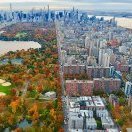Lightroom
-
Recently Browsing 0 members
- No registered users viewing this page.
-
Topics
-
-
Popular Contributors
-
-
Latest posts...
-
36
Report Thailand Advances Jomtien Beach Sand Replenishment Phase 2
And the real improvements like this drainage from S. Jomtiem beach rd to water are never seen again. Instead this ridiculou$ horizontal drain pipe mess all along Jomtiem beach that like the Pattaya beach project most likely will fail (filled up with sand . Requiring portable pumps as can be seen along Pattaya beach -
128
What happened to Rock n Roll
That sounds like it should be a horror movie, not a song. Thanks for pointing out more sick songs. I'm glad I never got into Lynyrd Skynyrd. -
28
Crime Chinese Tourist Robbed of ฿8000 After Night with Pattaya Bargirl
This guy is an idiot! -
13
Judges Doubt Govt. as Trump Just. Dept. Misleads & Dodges Orders
Now they had the FBI the DOJ and Trumps lawyers met in the White House today to strategize how to handle trumps decades long close friendship with Jeffery Epstein….just what pray tell happened to equal but separate branches of government?they are collaborating on getting their boss off the hook for that mess….my point being is that absolutely flys in disregard for our constitution and rule of law….we can see very very clearly just who’s shoes are on who’s feet. -
272
USA immigration and customs enforcement ,protecting the homeland…News
Thank You Mr Trump.- 1
-

-
0
Oh so much winning I can't stand it!! Not
Keep your fingers crossed that currency exchange rates aren't negatively affected. Americans are fast becoming persona non grata. https://www.nytimes.com/2025/08/07/business/economy/trump-tariffs-prices-consumers.html?smid=url-share
-
-
Popular in The Pub




.thumb.jpg.b54783ad387f65d779e04f535fcfeee9.jpg)




.thumb.jpg.c181973b2912b35c5c7c94d7a4a1b0ab.jpg)
.thumb.jpg.bc523c85a8d558dbc282dca7a2e602c9.jpg)

Recommended Posts
Create an account or sign in to comment
You need to be a member in order to leave a comment
Create an account
Sign up for a new account in our community. It's easy!
Register a new accountSign in
Already have an account? Sign in here.
Sign In Now